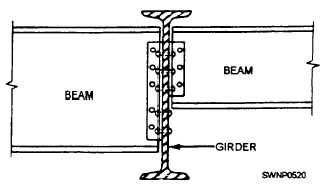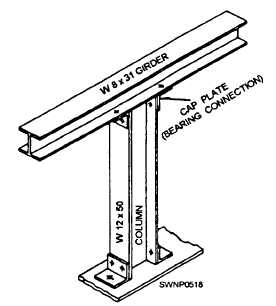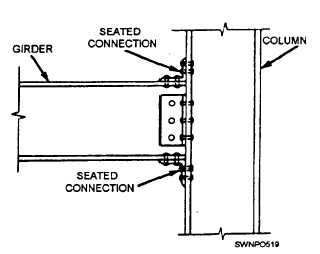
Figure 3-16. - Column splice with no size change

Figure 3-14. - Girder span on a wide flange column.

Figure 3-17. - Coped and blocked beam ends.

Figure 3-15. - Seated connections.
BEAMS
Beams are generally smaller than girders and are usually connected to girders as intermediate members or to columns. Beam connections at a column are similar to the seated girder-to-column connection. Beams are used generally to carry floor loads and transfer those loads to the girders as vertical loads. Since beams are usually not as deep as girders, there are several alternative methods of framing one into the other. The simplest method is to frame the beam between the top and bottom flanges on the girder, as shown in figure 3-16. If it is required that the top or bottom flanges of the girders and beams be flush, it is necessary to cut away (cope) a portion of the upper or lower beam flange, as illustrated in figure 3-17.
BAR JOIST
Bar joists form a lightweight, long-span system used as floor supports and built-up roofing supports, as shown in figure 3-18. Bar joists generally run in the same direction as a beam and may at times eliminate the need for beams. You will notice in figure 3-19 that bar joists must have a bearing surface. The span is from girder to girder. (See fig. 3-20.)
Prefabricated bar joists designed to conform to specific load requirements are obtainable from commercial companies.
TRUSSES
Steel trusses are similar to bar joists in that they serve the same purpose and look somewhat alike. They are, however, much heavier and are fabricated almost entirely from structural shapes, usually angles and T-shapes. (See fig. 3-21.) Unlike bar joists, trusses can be fabricated to conform to the shape of almost any roof system (fig. 3-22) and are therefore more versatile than bar joists.
The bearing surface of a truss is normally the column. The truss may span across the entire building from outside column to outside column. After the trusses have been erected, they must be secured between the BAYS with diagonal braces (normally
Continue Reading